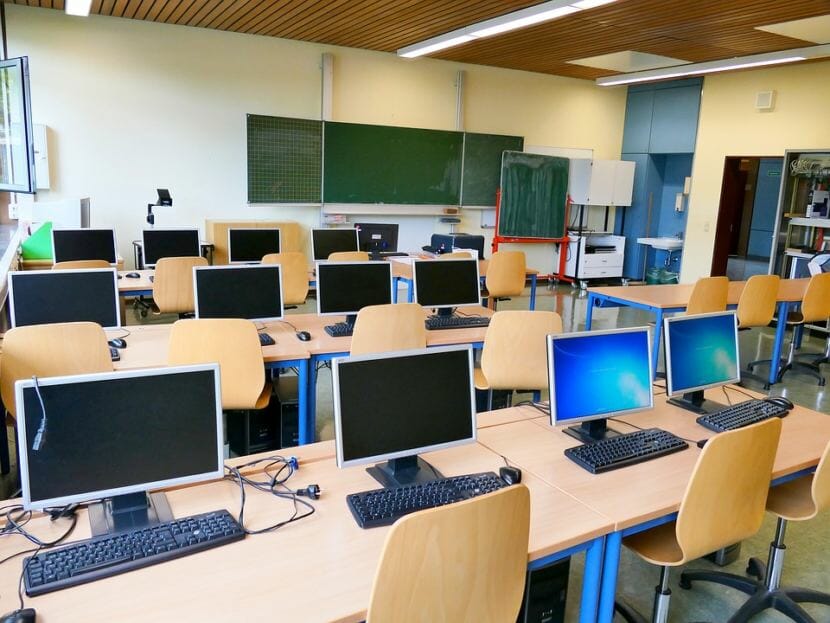
Technology is becoming an increasingly vital part of education. But in Alaska, getting the right internet speed to support new technology isn’t always cheap or easy. There’s a state program that helps schools pay for internet. However, the need for faster internet is outgrowing the program.
Joshua Hinds is the principal of the Susan B. English School in Seldovia, and he says the school uses a lot of technology that allows his students to participate in classes that would otherwise be unavailable.
“We use a program called Polycom, which is a video conferencing program,” he said. “We also use Google Classroom or Skype instructions.”
Bringing more of this technology into classrooms is only increasing the need for internet speed. Up until about a year and a half ago, Susan B. English had about 10 megabits per second of bandwidth. Bandwidth is like the number of lanes you have on a highway. More lanes means more opportunity for cars to travel without getting stuck in traffic, or in the case of the internet, more people can use it without slowing down the connection.
The Kenai Peninsula Borough School District recently doubled Susan B. English’s bandwidth.
But that increase also cost the school some state funding under the School Broadband Assistance Grant, better known as the School BAG program. The program helps supplement federal money to make sure schools can afford 10-megabit internet speeds.
Patience Frederiksen is the state librarian with the Alaska Department of Education and Early Development, which administers the School BAG program. She said there’s a lot of support for the program from school districts.
“They all talk about it as sort of the bread and butter of what they need to provide good technology for their students,” she said. “Though that has tapered off in the past few years because the program needs to expand. We need to offer more money for higher bandwidth.”
Determining how much bandwidth every school needs is a complex process, and it largely depends on a school’s population. But the School BAG program set the floor at 10 megabits.
“It’s a thing in which a floor ends up becoming a ceiling: you go to the next higher level when you have a new floor and then you aspire to the next ceiling,” she said. “It’s just sort of climbing the internet mountain.”
Schools, such as Susan B. English, have outgrown the program and found other ways to pay for faster internet.
“So that’s what we’re watching is if school bag does not get revived with more money into a higher level to pull schools up to the next step, then this program is just going to wither away,” she said.
But the program is still critical for many schools. For example, last year the Kuspuk School District received roughly $400,000 toward its internet bill, which is incredibly valuable funding for a rural school district. And the Kenai Peninsula Borough School District still has two schools on the program.
But school bag officials want the program to provide funding for faster speeds, which could help more schools. A bill that would have helped schools pay for 25 megabits of internet speed failed in the legislature last year. Program officials hope similar legislation will be introduced during the next legislative session.
If a bill passed this year, schools like Susan B. English could be one of a handful in the Kenai Peninsula district that could requalify for the School BAG program. That would be good news for principal Hinds.
“I just know that moving forward we’re always going to be looking to do more and so we’re going to be wanting and needing more bandwidth for sure,” he said.
As the need for bandwidth increases, so does the potential for a wider digital divide between rural schools and their larger counterparts. Hinds said it’s critical that his students have the same access to educational technology as any other student.
